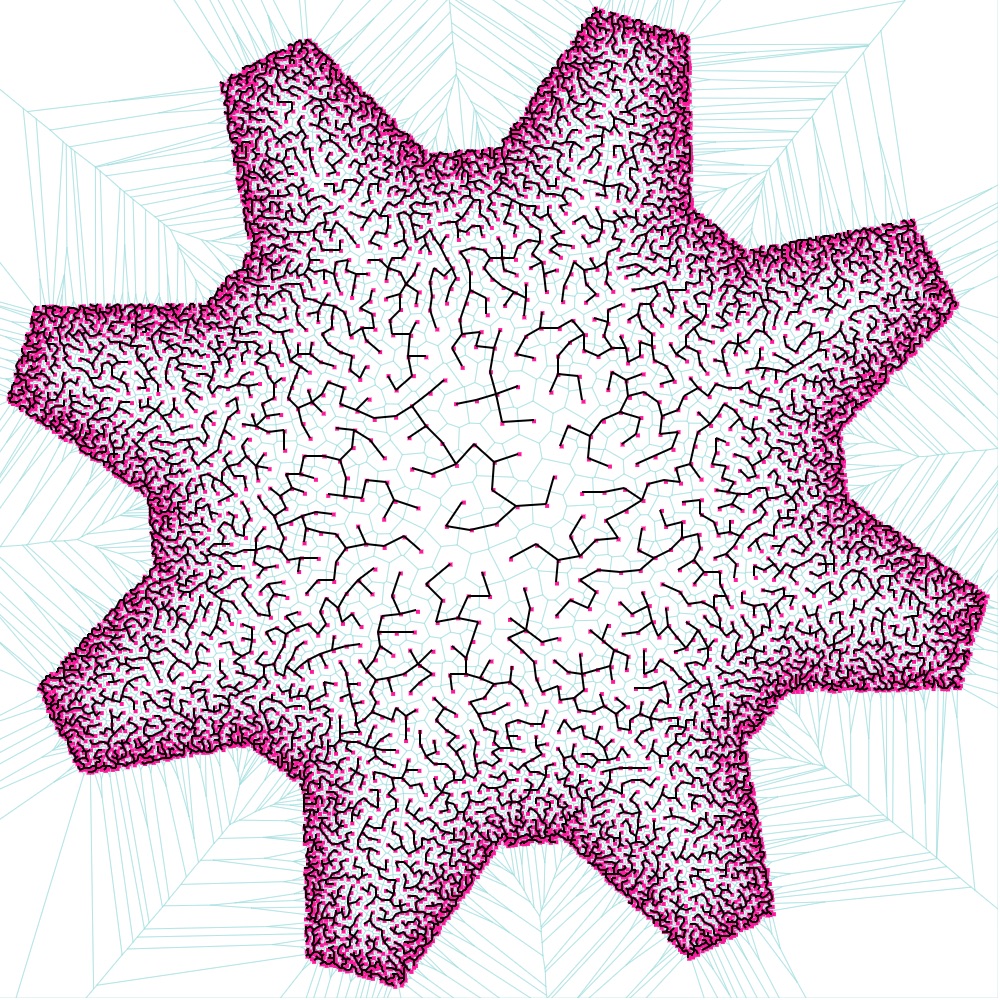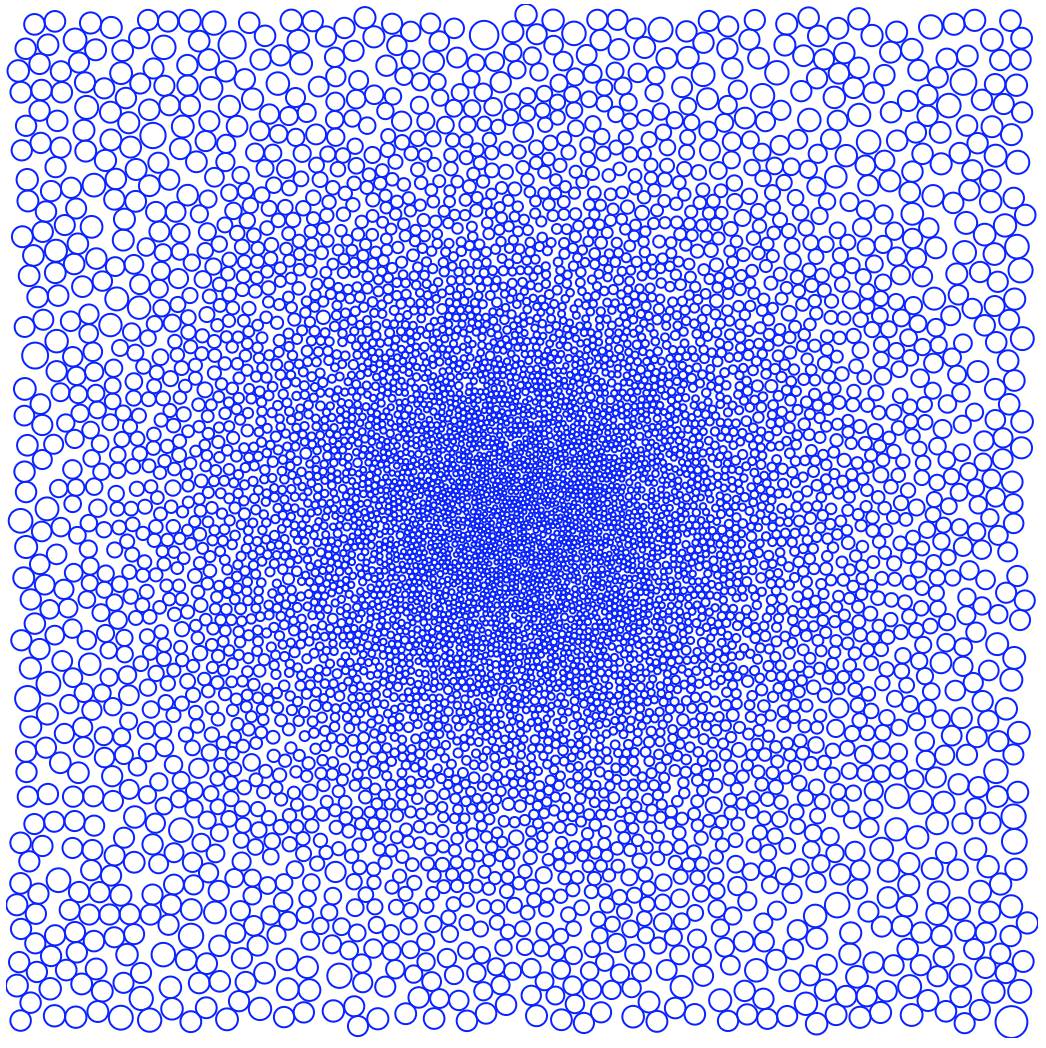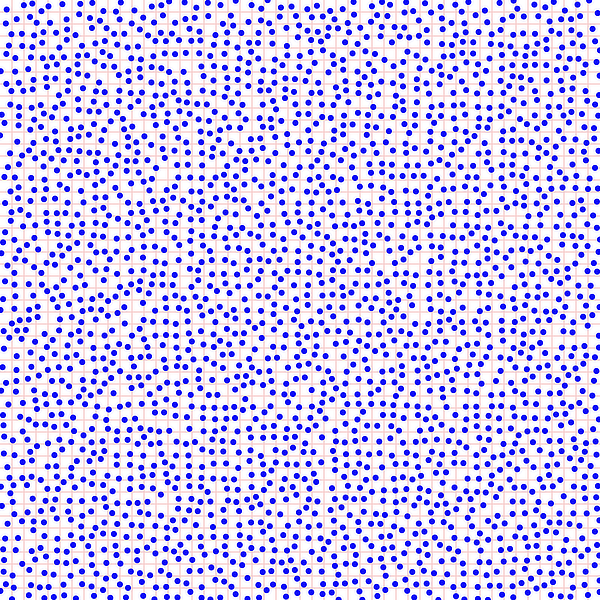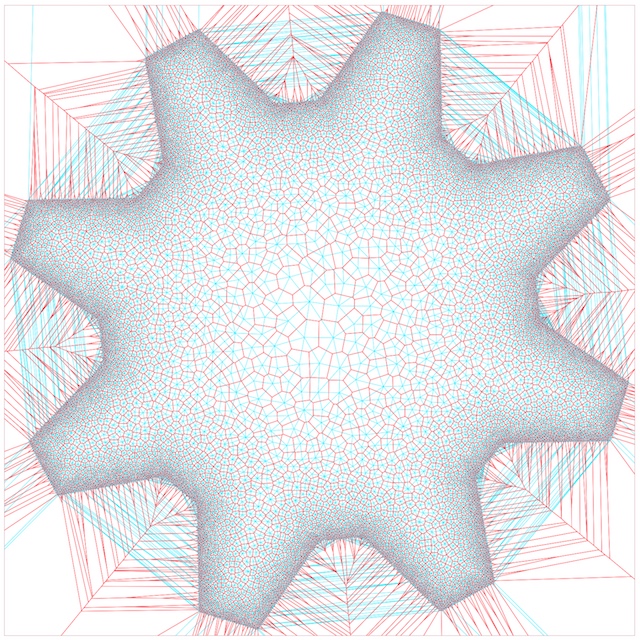This project is part of the @thi.ng/umbrella monorepo.
nD Stratified grid and Poisson disc
sampling with
support for variable spatial density, custom PRNGs (via
@thi.ng/random's
IRandom interface & implementations) and customizable quality
settings.
The Poisson disc sampler requires a spatial index and we recommend using
KdTreeSet from the
@thi.ng/geom-accel
package to speed up the sampling process, but other
ISpatialSet-compatible
indices are supported as well...
STABLE - used in production
Search or submit any issues for this package
- @thi.ng/geom - Functional, polymorphic API for 2D geometry types & SVG generation
- @thi.ng/geom-voronoi - Fast, incremental 2D Delaunay & Voronoi mesh implementation
- @thi.ng/lowdisc - n-dimensional low-discrepancy sequence generators/iterators
- @thi.ng/random - Pseudo-random number generators w/ unified API, distributions, weighted choices, ID generation
yarn add @thi.ng/poissonES module import:
<script type="module" src="https://cdn.skypack.dev/@thi.ng/poisson"></script>For Node.js REPL:
# with flag only for < v16
node --experimental-repl-await
> const poisson = await import("@thi.ng/poisson");
Package sizes (gzipped, pre-treeshake): ESM: 493 bytes
Several demos in this repo's /examples directory are using this package.
A selection:
| Screenshot | Description | Live demo | Source |
|---|---|---|---|
 |
Poisson-disk shape-aware sampling, Voronoi & Minimum Spanning Tree visualization | Demo | Source |
 |
2D Poisson-disc sampler with procedural gradient map | Demo | Source |
 |
2D Stratified grid sampling example | Demo | Source |
The package provides a single function samplePoisson() and the
following options to customize the sampling process:
- points: Point generator function. Responsible for producing a new candidate point within user defined bounds using provided RNG.
- density: Density field function. Called for each new candidate point created by point generator and should return the poisson disc exclusion radius for the given point location. The related candidate point can only be placed if no other points are already existing within the given radius/distance. If this option is given as number, uses this value to create a uniform distance field.
- index: Spatial indexing implementation for nearest neighbor
searches of candidate points. Currently only
@thi.ng/geom-accel
types are supported. The data structure is used to store all
successful sample points. Furthermore, pre-seeding the data structure
allows already indexed points to participate in the sampling process
and so can be used to define exclusion zones. It also can be used as
mechanism for progressive sampling, i.e. generating a large number of
samples and distributing the process over multiple invocations of
smaller sample sizes (see
maxoption) to avoid long delays. - max: Max number of samples to produce. Must be given, no default.
- jitter?: Step distance for the random walk each failed candidate point is undergoing. This distance should be adjusted depending on overall sampling area/bounds. Default: 1
- iter?: Number of random walk steps performed before giving up on a candidate point. Increasing this value improves overall quality. Default: 1
- quality?: Number of allowed failed consecutive candidate points
before stopping entire sampling process (most likely due to not being
able to place any further points). As with the
iterparam, increasing this value improves overall quality, especially in dense regions with small radii. Default: 500 - rnd?: Random number generator instance. Default:
@thi.ng/random
SYSTEM(aka Math.random)
import { asSvg, circle, svgDoc } from "@thi.ng/geom";
import { KdTreeSet } from "@thi.ng/geom-accel";
import { fit01 } from "@thi.ng/math";
import { samplePoisson } from "@thi.ng/poisson";
import { dist, randMinMax2 } from "@thi.ng/vectors";
const index = new KdTreeSet(2);
const pts = samplePoisson({
index,
points: () => randMinMax2(null, [0, 0], [500, 500]),
density: (p) => fit01(Math.pow(dist(p, [250, 250]) / 250, 2), 2, 10),
iter: 5,
max: 8000,
quality: 500,
});
// use thi.ng/geom to visualize results
// each circle's radius is set to distance to its nearest neighbor
const circles = pts.map((p) =>
circle(p, dist(p, index.queryKeys(p, 40, 2)[1]) / 2)
);
document.body.innerHTML = asSvg(
svgDoc({ fill: "none", stroke: "blue" }, ...circles)
);The stratifiedGrid function can produce nD grid samples based on the following config options:
- dim: nD vector defining grid size (in cells)
- samples?: Number of samples per grid cell (default: 1)
- rnd?: Random number generator instance. Default:
@thi.ng/random
SYSTEM(aka Math.random)
import { asSvg, circle, svgDoc } from "@thi.ng/geom";
import { KdTreeSet } from "@thi.ng/geom-accel";
import { stratifiedGrid } from "@thi.ng/poisson";
import { map } from "@thi.ng/transducers";
import { dist } from "@thi.ng/vectors";
const index = new KdTreeSet(2);
index.into(stratifiedGrid({ dim: [50, 50], samples: 1 }));
document.body.innerHTML = asSvg(
svgDoc(
{
width: 600,
height: 600,
fill: "none",
stroke: "blue",
"stroke-width": 0.1,
},
...map(
(p) => circle(p, dist(p, index.queryKeys(p, 2 * Math.SQRT2, 2)[1]) / 2),
index.keys()
)
)
);Karsten Schmidt
If this project contributes to an academic publication, please cite it as:
@misc{thing-poisson,
title = "@thi.ng/poisson",
author = "Karsten Schmidt",
note = "https://thi.ng/poisson",
year = 2016
}© 2016 - 2021 Karsten Schmidt // Apache Software License 2.0
